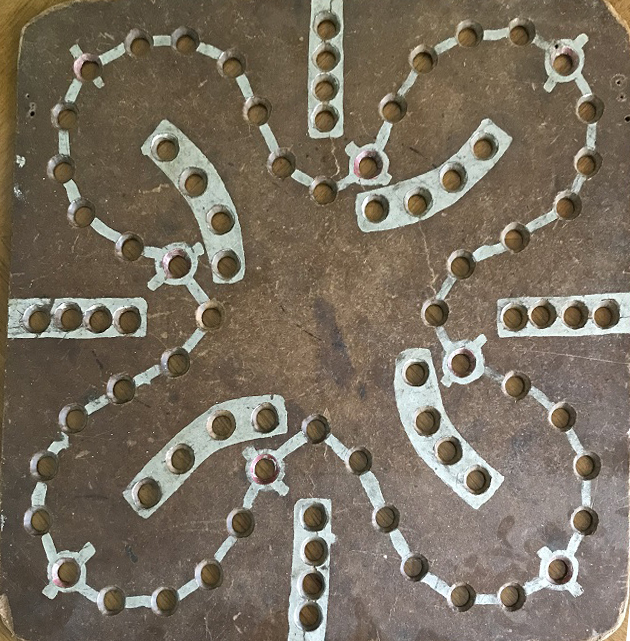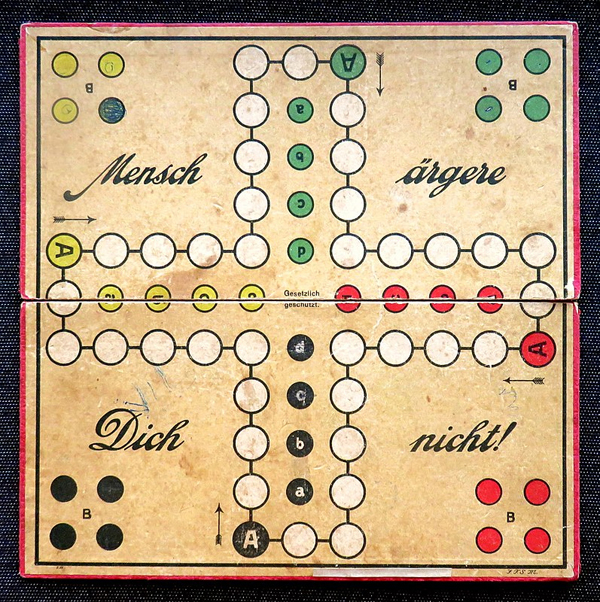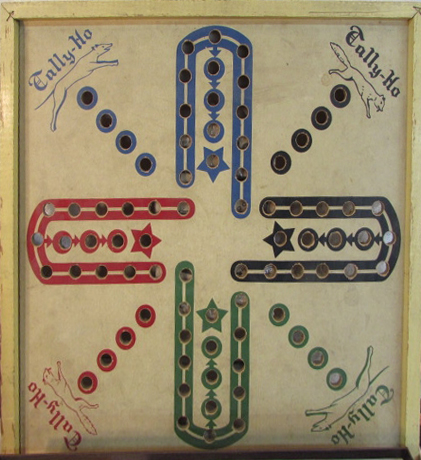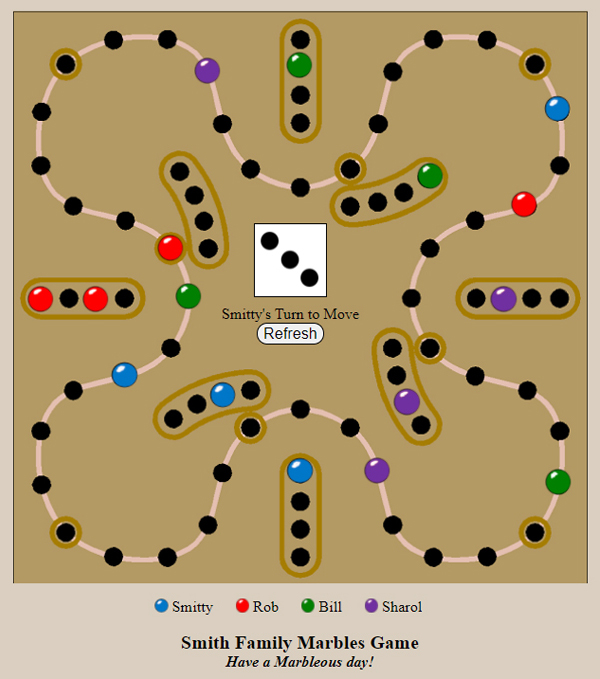I want to thank the many people who contributed to this game. First, I want to thank my brother Rob who created the board images for me. Rob also sent me a document containing the XY coordinates for all the marble holes. Second, I want to thank my sister Sharol who along with Rob did the majority of the work in creating the Rules document. Sharol also was the primary mover in choosing the color scheme used in the "Patriarch" version of the board layout. This is my own favorite layout. The name "Patriarch" was given to it because our oldest brother Larry said he liked that color. Finally, I want to thank my wife Sheila who put up with my spending hours of time creating and testing the game. The game is a kind of family heirloom. Family history says that it was created by one of our ancestors. Details about this are below.
History
Growing up in the 40's, 50's and 60's there weren't any video games, Internet, tablets, iPads, etc. TV came along in the 50's, but with a limited number of channels. There wasn't any Netflix, cable, or pay channels, etc. The closest thing to "on demand" was mom demanding that we do the dishes. So playing games with my siblings involved outdoor sports, ping pong, cards, or board games. One of our favorite games was a marble board game that we called "Tally Ho". It was a game much like Parcheesi, Sorry, Aggravation, etc. Us kids created an alternate version of the game called "War". It involved removing the marbles of opponents until only your marbles remained on the board. Family history says that my mom's father made four boards - one for each of his children. We were also told that one of our ancestors had created the game. I remember my aunts and uncles coming over to visit, and all the adults enjoyed playing this game as well.
 When my wife and I got married, my younger brother Smitty (Al) made us our own copy of the game. He made two copies - an initial test board, and the one that he gave us. The original board made by my grandfather has long since disappeared, and the board that Smitty gave me is lost as well, but the first board that Smitty made ended up with my youngest brother Rob.
When my wife and I got married, my younger brother Smitty (Al) made us our own copy of the game. He made two copies - an initial test board, and the one that he gave us. The original board made by my grandfather has long since disappeared, and the board that Smitty gave me is lost as well, but the first board that Smitty made ended up with my youngest brother Rob.
Recently I created an online version of the Hand and Foot card game. I enjoyed creating it, and people seemed to enjoy playing it. I decided to try and recreate the old family game. I contacted my siblings to see if anyone still had a copy of the board.
All of my siblings quickly jumped in saying how much they had enjoyed playing the game. Rob shared a photo of the board that he still had. Rob and Sharol spearheaded an effort to create a set of rules for how the game was played.
 Meanwhile, my brother Smitty did some google research and found a wikipedia link that described a game "Mensch ärgere Dich nicht" (Man, Don't Get Angry), a German board game developed by Josef Friedrich Schmidt in 1907/1908. You can read the article at
Meanwhile, my brother Smitty did some google research and found a wikipedia link that described a game "Mensch ärgere Dich nicht" (Man, Don't Get Angry), a German board game developed by Josef Friedrich Schmidt in 1907/1908. You can read the article at  There is also a possibility that the game came from my maternal grandfather's side of the family. The Baumeister family also came from Germany. I did some google research looking for a "Tally Ho" marble game and found this image. I could not find any information or background to go along with it. I do find it highly interesting that the name of this game is identical to the name our family always called our marble game.
There is also a possibility that the game came from my maternal grandfather's side of the family. The Baumeister family also came from Germany. I did some google research looking for a "Tally Ho" marble game and found this image. I could not find any information or background to go along with it. I do find it highly interesting that the name of this game is identical to the name our family always called our marble game.
 There are differences between our family board and both the Schmidt board and the unknown Tally Ho board. Both of those boards are the standard cross and circle game. Josef's board has 40 holes to travel from it's coming out position to the last position before going home. The Tally Ho board has 54 holes to travel (48 plus 6 overlap if you enter base from bottom of Ubend). Our family game has only 48 holes to travel (no overlap). The other interesting difference between our family game and the Josef and Tally Ho games is that our board has a clover leaf pattern rather then the more standard cross and circle design.
There are differences between our family board and both the Schmidt board and the unknown Tally Ho board. Both of those boards are the standard cross and circle game. Josef's board has 40 holes to travel from it's coming out position to the last position before going home. The Tally Ho board has 54 holes to travel (48 plus 6 overlap if you enter base from bottom of Ubend). Our family game has only 48 holes to travel (no overlap). The other interesting difference between our family game and the Josef and Tally Ho games is that our board has a clover leaf pattern rather then the more standard cross and circle design.